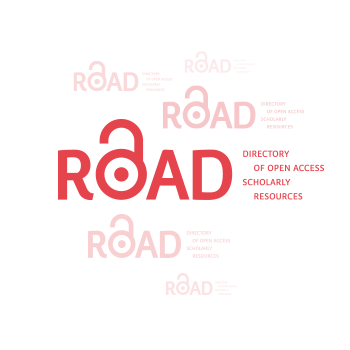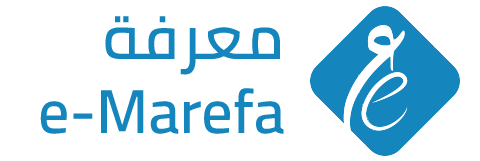The Reality of Employing Artificial Intelligence Tools in the Processes of Learning and Teaching from the Perspective of Al-Quds Open University Students – Nablus Branch
DOI:
https://doi.org/10.59994/pau.2025.SI.39Keywords:
Artificial Intelligence, Education and Learning, Al-Quds Open UniversityAbstract
The study aimed to identify the reality of employing artificial intelligence tools in the learning and teaching processes from the point of view of students at Al-Quds Open University in the Nablus branch, to achieve the objectives, the researchers used the descriptive quantitative approach, and a questionnaire was constructed as a tool for quantitative data. The study sample consisted of (86) male and female students who were selected by the stratified random method based on the college variable. The results showed that the reality of employing artificial intelligence tools in the learning and teaching processes from the point of view of students at Al-Quds Open University in the Nablus branch was moderate. The results also showed that there were no statistically significant differences at the significance level (0.05 = α) between the average responses of students at Al-Quds Open University in the Nablus branch to the reality of employing artificial intelligence tools in the learning and teaching processes attributed to the variables (gender, and academic year), while the results showed differences in the college variable, in favor of colleges. Humanity, and the study recommended holding introductory meetings for Al-Quds Open University students on the areas of using artificial intelligence applications in the educational process. The distinctiveness of this study lies in the vitality and novelty of its subject, being intrinsically connected to the ongoing artificial intelligence revolution. It tackles an issue of growing significance within higher education, particularly in the context of the accelerating digital transformation.
Downloads
References
المراجع العربية:
إسماعيل، علا. (2023). تفعيل استخدام تطبيقات الذكاء الاصطناعي داخل الجامعات المصرية لتحقيق المتعة التعليمية من وجهة نظر الطلاب، مجلة كلية التربية بجامعة المنصورة، 122(1)، 749-828.
الحارثي، ليلى. (2023). واقع استخدام تطبيقات الذكاء الاصطناعي في تدريس طلاب وطالبات المرحلة الثانوية من وجهة نظر الخبراء، المؤتمر الدولي الثالث للبحث العلمي ودوره في تحقيق التنمية المستدامة للمجتمعات بالوطن العربي، 102-109.
الخيبري، صبرية. (2020). درجة امتلاك معلمات المرحلة الثانوية بمحافظة الخرج لمهارات توظيف الذكاء الاصطناعي في التعليم. دراسات عربية في التربية وعلم النفس، العدد 119، 119-152.
سعد الله، عمار؛ شتوح، وليد. (2019). أهمية الذكاء الاصطناعي في تطوير التعليم. كتاب جماعي بعنوان تطبيقات الذكاء الاصطناعي كتوجه حديث لتعزيز تنافسية منظمات الأعمال، (ص 130-148)، برلين، المركز الديمقراطي العربي للدراسات الاستراتيجية والسياسية والاقتصادية.
الصبحي، صباح. (2020). واقع استخدام أعضاء هيئة التدريس بجامعة نجران لتطبيقات الذكاء الاصطناعي في التعليم، مجلة كلية التربية في العلوم التربوية، 44(4)، 319-368.
عبدالالوي، نجاة. (2021). إسهامات الذكاء الاصطناعي والتكنولوجيا الحديثة في تطوير وتحسين العملية التعليمية، المجلة العربية للتربية، 40(2)،191-205.
العتل، محمد؛ العنزي، إبراهيم؛ العجمي، عبد الرحمن. (2021). دور الذكاء الاصطناعي (AI) في التعليم من وجهة نظر طلبة كلية التربية الأساسية بدولة الكويت، مجلة الدراسات والبحوث التربوية. 1(1)، 30-64.
العتيبي، وفاء؛ عبد المجيد، أِشرف. (2024). واقع توظيف تطبيقات الذكاء الاصطناعي في العملية التعليمية من وجهة نظر معلمات الحاسب الآلي بمدينة الرياض في ضوء بعض المتغيرات. رابطة التربويين العرب، 150(2)، 466-443.
عفيفي، جهاد. (2014). الذكاء الاصطناعي والأنظمة الخبيرة. عمان، دار أمجد للنشر والتوزيع.
الفراني، لينا؛ الحجيلي، سمر. (2020). العوامل المؤثرة على قبول المعلم لاستخدام الذکاء الاصطناعي في التعليم في ضوء النظرية الموحدة لقبول واستخدام التکنولوجيا (UTAUT)، المجلة العربية للعلوم التربوية والنفسية، 4(14)، 215-252.
فيلالي، غنية؛ بوعروج، لمياء. (2019). الجامعة الجزائرية وتجربة التعليم الإلكتروني عن بعد: جامعة قسنطينة نموذجاً. المجلة العربية للإعلام وثقافة الطفل، العدد 6، 1-16.
قرقاجي، أشواق. (2023). توظيف تطبيقات الذكاء الاصطناعي ودرجة أهميتها في العملية التعليمية من وجهة نظر معلمي الحاسب الآلي. مجلة العلوم التربوية والنفسية، 42(7)، 65-86.
قشطي، نبيلة. (2020). تأثير الذكاء الاصطناعي على تطوير نظم التعليم، المجلة الدولية للتعليم بالأنترنت، 19(1)، 67-90.
قطامي، سمير. (2018). الذكاء الاصطناعي وأثره على البشرية. مجلة أفكار، عدد 357، 13-40.
اليمين، فالتة؛ صدراتي، فضيلة. (2019). عوائق استخدام التعليم الالكتروني في تدريس طلبة الماستر بالجامعة الجزائرية. المجلة العربية للإعلام وثقافة الطفل، العدد 6، 17-47.
اليونسكو.(2019). الذكاء الاصطناعي في التعليم، المؤتمر الدولي حول الذكاء الاصطناعي بمايو. اليونسكو، متوفر على الرابط: https://unesdoc.unesco.org/
المراجع العربية بنظام الرومنة
Esma'eyl, 'Ela. (2023). tf'eyl astkhdam ttbyqat aldka' alastna'ey dakhl aljam'eat almsryh lthqyq almt'eh alt'elymyh mn wjhh nzr altlab, mjlh klyh altrbyh bjam'eh almnswrh, 122(1), 749-828.
Alharthy, Lyla. (2023). waq'e astkhdam ttbyqat aldka' alastna'ey fy tdrys tlab wtalbat almrhlh althanwyh mn wjhh nzr alkhbra', alm'etmr aldwly althalth llbhth al'elmy wdwrh fy thqyq altnmyh almstdamh llmjtm'eat balwtn al'erby, 102-109.
Alkhybry, Sbryh. (2020). drjh amtlak m'elmat almrhlh althanwyh bmhafzh alkhrj lmharat twzyf aldka' alastna'ey fy alt'elym. drasat 'erbyh fy altrbyh w'elm alnfs, al'edd 119, 119-152.
S'ed Allh, 'Emar؛ Shtwh, Wlyd. (2019). ahmyh aldka' alastna'ey fy ttwyr alt'elym. ktab jma'ey b'enwan ttbyqat aldka' alastna'ey ktwjh hdyth lt'ezyz tnafsyh mnzmat ala'emal, (s 130-148), brlyn, almrkz aldymqraty al'erby lldrasat alastratyjyh walsyasyh walaqtsadyh.
Alsbhy, Sbah. (2020). waq'e astkhdam a'eda' hy'eh altdrys bjam'eh njran lttbyqat aldka' alastna'ey fy alt'elym, mjlh klyh altrbyh fy al'elwm altrbwyh, 44(4), 319-368.
'Ebdalalwy, Njah. (2021). eshamat aldka' alastna'ey waltknwlwjya alhdythh fy ttwyr wthsyn al'emlyh alt'elymyh, almjlh al'erbyh lltrbyh, 40(2),191-205.
Al'etl, Mhmd؛ Al'enzy, Ebrahym؛ Al'ejmy, 'Ebd Alrhmn. (2021). dwr aldka' alastna'ey (AI) fy alt'elym mn wjhh nzr tlbh klyh altrbyh alasasyh bdwlh alkwyt, mjlh aldrasat walbhwth altrbwyh. 1(1), 30-64.
Al'etyby, Wfa'؛ 'Ebd Almjyd, Aِshrf. (2024). waq'e twzyf ttbyqat aldka' alastna'ey fy al'emlyh alt'elymyh mn wjhh nzr m'elmat alhasb alaly bmdynh alryad fy dw' b'ed almtghyrat. rabth altrbwyyn al'erb, 150(2), 466-443.
'Efyfy, Jhad. (2014). aldka' alastna'ey walanzmh alkhbyrh. 'eman, dar amjd llnshr waltwzy'e.
Alfrany, Lyna؛ Alhjyly, Smr.(2020). al'ewaml alm'ethrh 'ela qbwl alm'elm lastkhdam aldکa' alastna'ey fy alt'elym fy dw' alnzryh almwhdh lqbwl wastkhdam altکnwlwjya (UTAUT), almjlh al'erbyh ll'elwm altrbwyh walnfsyh, 4(14), 215-252.
Fylaly, Ghnyh؛ Bw'erwj, Lmya'. (2019). aljam'eh aljza'eryh wtjrbh alt'elym alelktrwny 'en b'ed: jam'eh qsntynh nmwdjaan. almjlh al'erbyh lle'elam wthqafh altfl, al'edd 6, 1-16.
Qrqajy, Ashwaq. (2023). twzyf ttbyqat aldka' alastna'ey wdrjh ahmytha fy al'emlyh alt'elymyh mn wjhh nzr m'elmy alhasb alaly. mjlh al'elwm altrbwyh walnfsyh, 42(7), 65-86.
Qshty, Nbylh. (2020). tathyr aldka' alastna'ey 'ela ttwyr nzm alt'elym, almjlh aldwlyh llt'elym balantrnt, 19(1), 67-90.
Qtamy, Smyr. (2018). aldka' alastna'ey wathrh 'ela albshryh. mjlh afkar, 'edd 357, 13-40.
Alymyn, Falth؛ Sdraty, Fdylh. (2019). 'ewa'eq astkhdam alt'elym alalktrwny fy tdrys tlbh almastr baljam'eh aljza'eryh. almjlh al'erbyh lle'elam wthqafh altfl, al'edd 6, 17-47.
Alywnskw.(2019). aldka' alastna'ey fy alt'elym, alm'etmr aldwly hwl aldka' alastna'ey bmayw. alywnskw, mtwfr 'ela alrabt: https://unesdoc.unesco.org/
المراجع الأجنبية
Fahimirad, M., & Kotamjani, S. S. (2018). A review on application of artificial intelligence in teaching and learning in educational contexts. International Journal of Learning and Development, 8(4), 106-118.
Mangera, E., & Supratno, H. (2023). Exploring the Relationship between Transhumanist and Artificial Intelligence in the Education Context: Particularly Teaching and Learning Process at Tertiary Education. Pegem Journal of Education and Instruction, 13(2), 35-44.
Miralay, F. (2024). Use of artificial intelligence and augmented reality tools in art education course. Pegem Journal of Education and Instruction, 14(3), 44-50.
Tredinnick, L. (2017). Artificial intelligence and professional roles. Business Information Review, 34(1), 37-41.
Downloads
Published
How to Cite
Issue
Section
License
Copyright (c) 2025 Journal of Palestine Ahliya University for Research and Studies

This work is licensed under a Creative Commons Attribution 4.0 International License.
مجلة جامعة فلسطين الاهلية للبحوث والدراسات تعتمد رخصة نَسب المُصنَّف 4.0 دولي (CC BY 4.0)











